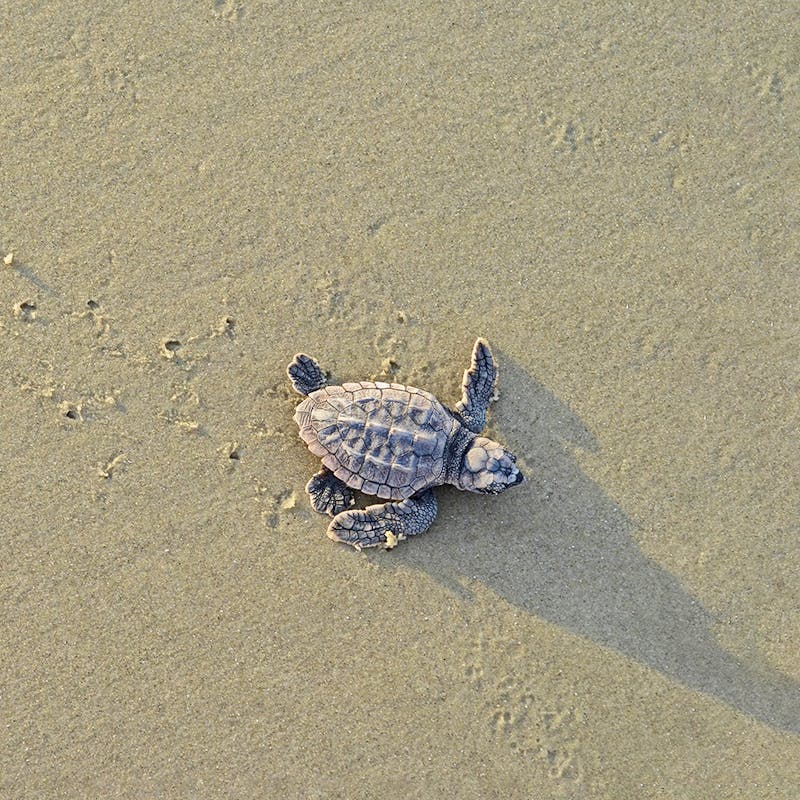Conservation groups are studying proposed rules released today by the National Park Service to govern off-road vehicle use at Cape Hatteras National Seashore. The groups are examining the document to see if the rules balance the interests of ORV enthusiasts with the park service’s primary responsibility to preserve the seashore’s natural resources, including rare sea turtles, birds, and their young, for present and future generations. As a unit of the National Park System, Cape Hatteras has been required for decades under federal law to establish guidelines for off-road vehicles (ORVs) that minimize harm to wildlife and natural values of the seashore in accordance with the best available science.
The preferred alternative announced today falls short of the U.S. Department of Interior’s own scientists’ recommendations regarding the measures needed to protect wildlife within the national park.
“We look forward to working with the park service to ensure compliance with legal and scientific requirements to guarantee adequate space and protections for pedestrians and wildlife, while still allowing responsible beach driving in some areas, so that all visitors can fully enjoy this national treasure,” said Julie Youngman, senior attorney, Southern Environmental Law Center. “The final rules should improve public access to the beaches for pedestrians and people with disabilities by adding boardwalks, parking spaces and public facilities to enhance visitor enjoyment in balance with wildlife conservation efforts.”
The park service’s preferred plan in today’s proposal sets aside only 16 miles of the 68 miles of seashore year-round as non-ORV areas for pedestrians, families, and wildlife.
“The past two years under the consent decree have proven that, if given a chance, birds and turtles can rebound, local tourism can be sustained, and responsible recreation can have a place within Cape Hatteras,” said Chris Canfield, executive director of Audubon North Carolina, referring to a settlement agreement approved in federal court in 2008. “With strong leadership from the Park Service and cooperation from local communities, Cape Hatteras can become a national example of balanced, progressive management.”
A February 4th court filing by the Cape Hatteras Access Preservation Association and Dare and Hyde Counties states the 2008 Consent Decree to manage ORV use provides “important biological benefits and protections” to piping plovers on the seashore. In fact, both wildlife numbers and park visitation numbers are up under the 2008 consent decree. The last two years had record numbers of turtle nests and the highest number of nesting piping plovers since 1998, as well as a net average increase of nearly 100,000 park visitors in 2008-2009 during months affected by the consent decree compared to the same time period during the three previous years, 2005-2007. Not only did park visitation remain solid, but Dare County rental occupancy for both 2008 and 2009 reached a record high over a 15 year period despite two years of a nationwide economic recession and Dare County’s public statements about its “closed” beaches.
“We will be examining the alternatives closely and will urge the park service to choose a management plan that protects the wildlife resources of Cape Hatteras for generations to come." said Jason Rylander, staff attorney for Defenders of Wildlife. "The park service has avoided its legal responsibilities for too long.”
The rules will also likely be reviewed by many scientific experts on species conservation. This winter, nearly 100 scientists signed a letter urging the National Park Service to implement the U.S. Geological Survey’s recommended protocols to managing beach driving for the protection of nesting birds and sea turtles within the park. In 2009, President Obama issued an Executive Order that federal agency decisions should be based in science.
Read more about what Defenders is doing to protect the species of Cape Hatteras National Seashore
For over 75 years, Defenders of Wildlife has remained dedicated to protecting all native animals and plants in their natural communities. With a nationwide network of nearly 2.1 million members and activists, Defenders of Wildlife is a leading advocate for innovative solutions to safeguard our wildlife for generations to come. To learn more, please visit https://defenders.org/newsroom or follow us on X @Defenders.
Media Contact
News

Department of Interior’s “Emergency Declaration” Suppresses Public Input and Strips Safeguards for Endangered Species


